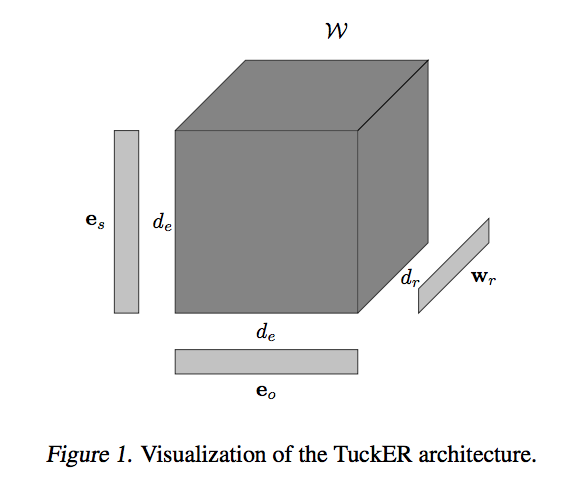GAN-based Matrix Factorization for Recommender Systems
This repository contains the datasets' splits, the source code of the experiments and their results for the paper "GAN-based Matrix Factorization for Recommender Systems" (arXiv: https://arxiv.org/abs/2201.08042) accepted at the 37th ACM/SIGAPP Symposium on Applied Computing (SAC '22).
How to use this repo
This repo is based on a version of Recsys_Course_AT_PoliMi. In order to run the code and experiments you need first to setup a Python environment. Any environment manager will work, but we suggest conda since it is easier to recreate our environment if using a GPU. conda can help with the installation of CUDA and CUDA toolkit necessary to utilize available GPU(s). We highly recommend running this repo with a GPU since GAN-based recommenders require long training times.
Conda
Run the following command to create a new environment with Python 3.6.8 and install all requirements in file conda_requirements.txt:
conda create -n <name-env> python==3.6.8 --file conda_requirements.txt
The file conda_requirements.txt also contains the packages cudatoolkit==9.0 and cudnn==7.1.2 which are installed completely separate from other versions you might already have installed and are managed by conda.
Install the following packages using pip inside the newly created environment since they are not found in the main channel of conda and conda-forge channel holds old versions of them:
pip install scikit-optimize==0.7.2 telegram-send==0.25
Activate the newly created environment:
conda activate <name-env>
Virtualenv & Pip
First download and install Python 3.6.8 from python.org. Then install virtualenv:
python -m pip install --user virtualenv
Now create a new environment with virtualenv (by default it will use the Python version it was installed with):
virtualenv <name-env> <path-to-new-env>
Activate the new environment with:
source <path-to-new-env>/bin/activate
Install the required packages through the file pip_requirements.txt:
pip install -r pip_requirements.txt
Note that if you intend to use a GPU and install required packages using virtualenv and pip then you need to install separately cudatoolkit==9.0 and cudnn==7.1.2 following instructions for your GPU on nvidia.com.
Before running any experiment or algorithm you need to compile the Cython code part of some of the recommenders. You can compile them all with the following command:
python run_compile_all_cython.py
N.B You need to have the following packages installed before compiling: gcc and python3-dev.
N.B Since the experiments can take a long time, the code notifies you on your Telegram account when the experiments start/end. Either configure telegram-send as indicated on https://pypi.org/project/telegram-send/#installation or delete the lines containing telegram-send inside RecSysExp.py.
Running experiments
All results presented in the paper are already provided in this repository. In case you want to re-run the experiments, below you can find the steps for each one of them.
Comparison with baselines1
In order to run all the comparisons with the baselines use the file RecSysExp.py. First compute for each dataset the 5 mutually exclusive sets:
-
Training set: once best hyperparameters of the recommender are found, it will be finally trained with this set.
- Training set small: the recommender is first trained on this small training set with the aim of finding the best hyperparameters.
- Early stopping set: validation set used to incorporate early stopping in the hyperparameters tuning.
- Validation set: the recommender with the current hyperparameter values is tested against this set.
-
Test set: once the best hyperparameters are found, the recommender is finally tested with this set. The results presented are the ones on this set.
Compute the splits for each dataset with the following command:
python RecSysExp.py --build-dataset <dataset-name>
To run the tuning of a recommender use the following command:
python RecSysExp.py <dataset-name> <recommender-name> [--user | --item] [<similarity-type>]
dataset-nameis a value among:1M, hetrec2011, LastFM.recommender-nameis a value among:TopPop, PureSVD, ALS, SLIMBPR, ItemKNN, P3Alpha, CAAE, CFGAN, GANMF.--useror--itemis a flag used only for GAN-based recommenders. It denotes the user/item-based training procedure for the selected recommender.similarity-typeis a value among:cosine, jaccard, tversky, dice, euclidean, asymmetric. It is used only for ItemKNN recommender.
All results, best hyperparameters and dataset splits are saved in the experiments directory.
Testing on test set with best hyperparameters
In order to test each tuned recommender on the test set (which is created when tuning the hyperparameters) run the following command:
python RunBestParameters.py <dataset-name> <recommender-name> [--user | --item] [<similarity-type>] [--force] [--bp <best-params-dir>]
dataset-nameis a value among:1M, hetrec2011, LastFM.recommender-nameis a value among:TopPop, PureSVD, ALS, SLIMBPR, ItemKNN, P3Alpha, CAAE, CFGAN, GANMF.--useror--itemis a flag used only for GAN-based recommenders. It denotes the user/item based training procedure for the selected recommender.similarity-typeis a value among:cosine, jaccard, tversky, dice, euclidean, asymmetric. It is used only for ItemKNN recommender.--forceis a flag that forces the computation of the results on test set. By default, if the result for the tuple (dataset, recommender) exists intest_resultdirectory, the computation is not performed.--bpsets the directory where the best parameters (best_params.pkl) are located for this combination of (dataset, recommender), by default inexperimentsdirectory.
The results are saved in the test_results directory.
Ablation study
To run the ablation study, use the script AblationStudy.py as follows:
python AblationStudy.py <dataset-name> [binGANMF | feature-matching [--user | --item]]
dataset-nameis a value among:1M, hetrec2011, LastFM.binGANMFruns the first ablation study, the GANMF model with binary classifier discrimnator. This tunes the recommender withRecSysExp.pyand then evaluates it withRunBestParameters.pyon the test set.--useror--itemis a flag that sets the training procedure forbinGANMFrecommender.feature-matchingruns the second ablation study, the effect of the feature matching loss and the user-user similarity heatmaps. The results are saved in thefeature_matchingdirectory.
MF model of GANMF
To run the qualitative study on the MF learned by GANMF, use the script MFLearned.py as follows:
python MFLearned.py
It executes both experiments and the results are saved in the latent_factors directory.
Footnotes
-
For the baselines
Top Popular,PureSVD,ALS,SLIMBPR,ItemKNN,P3Alphaand model evaluation we have used implementations from Recsys_Course_AT_PoliMi.↩







